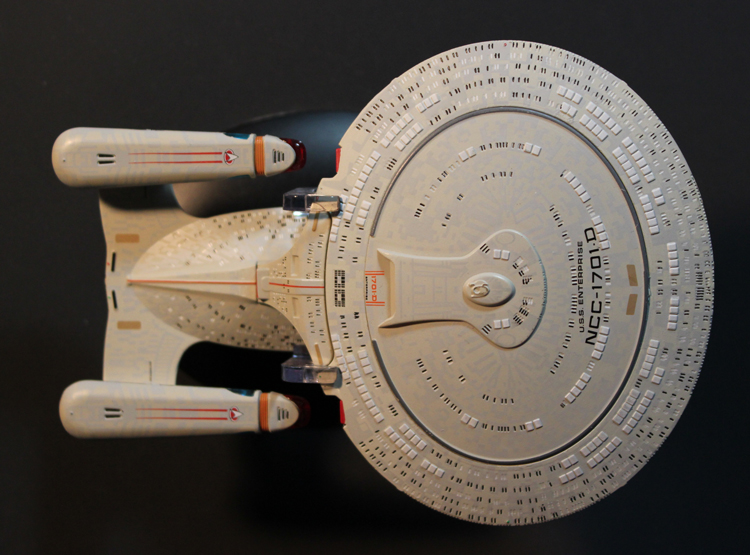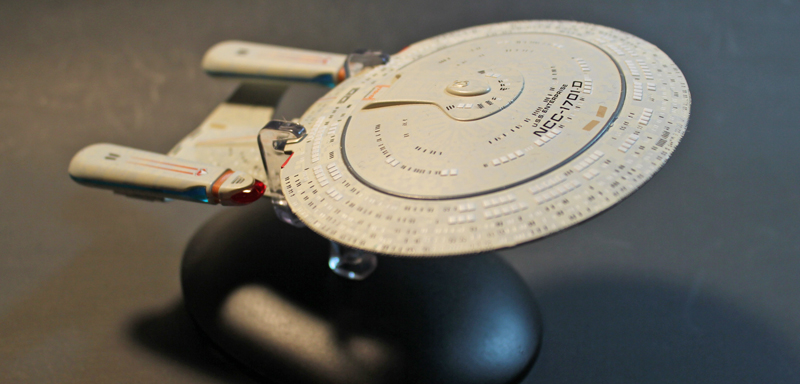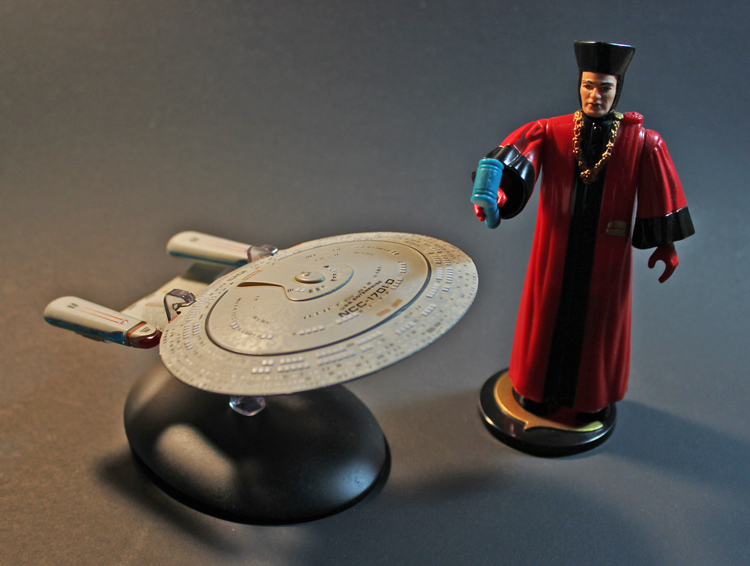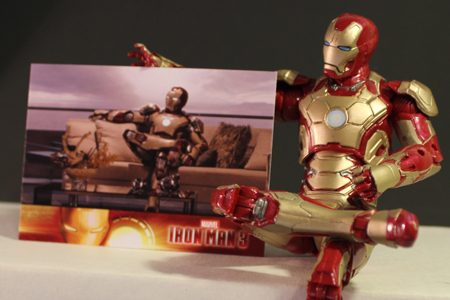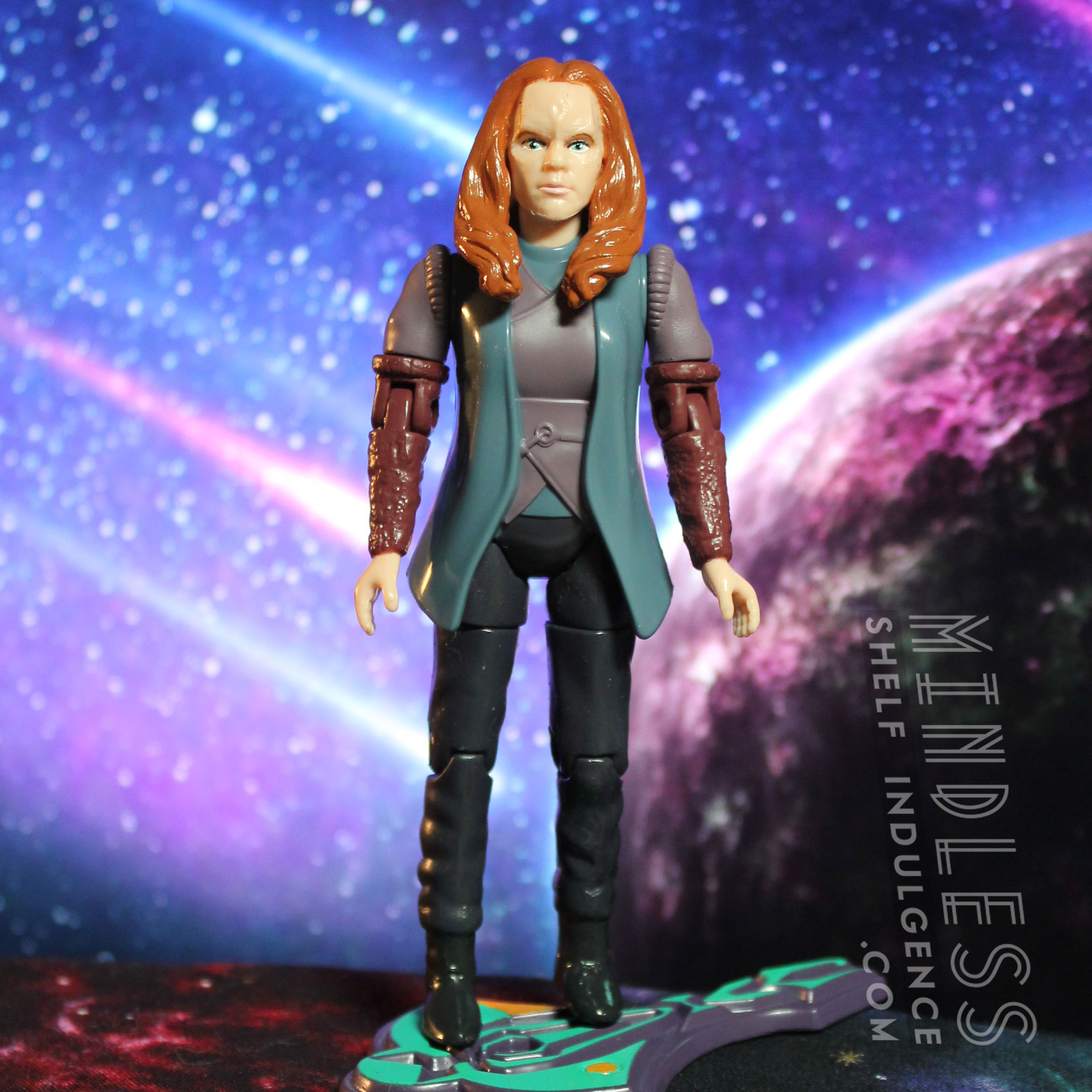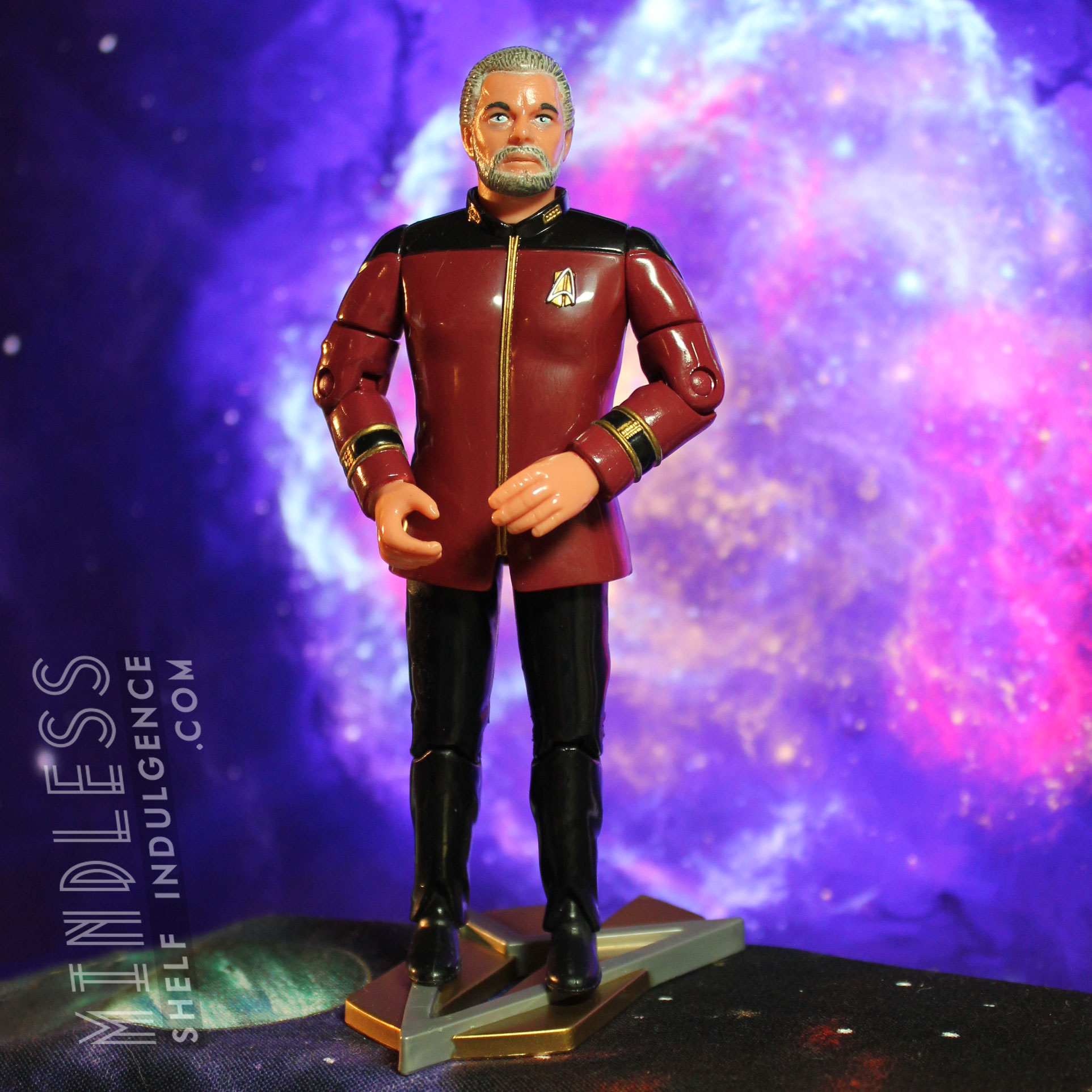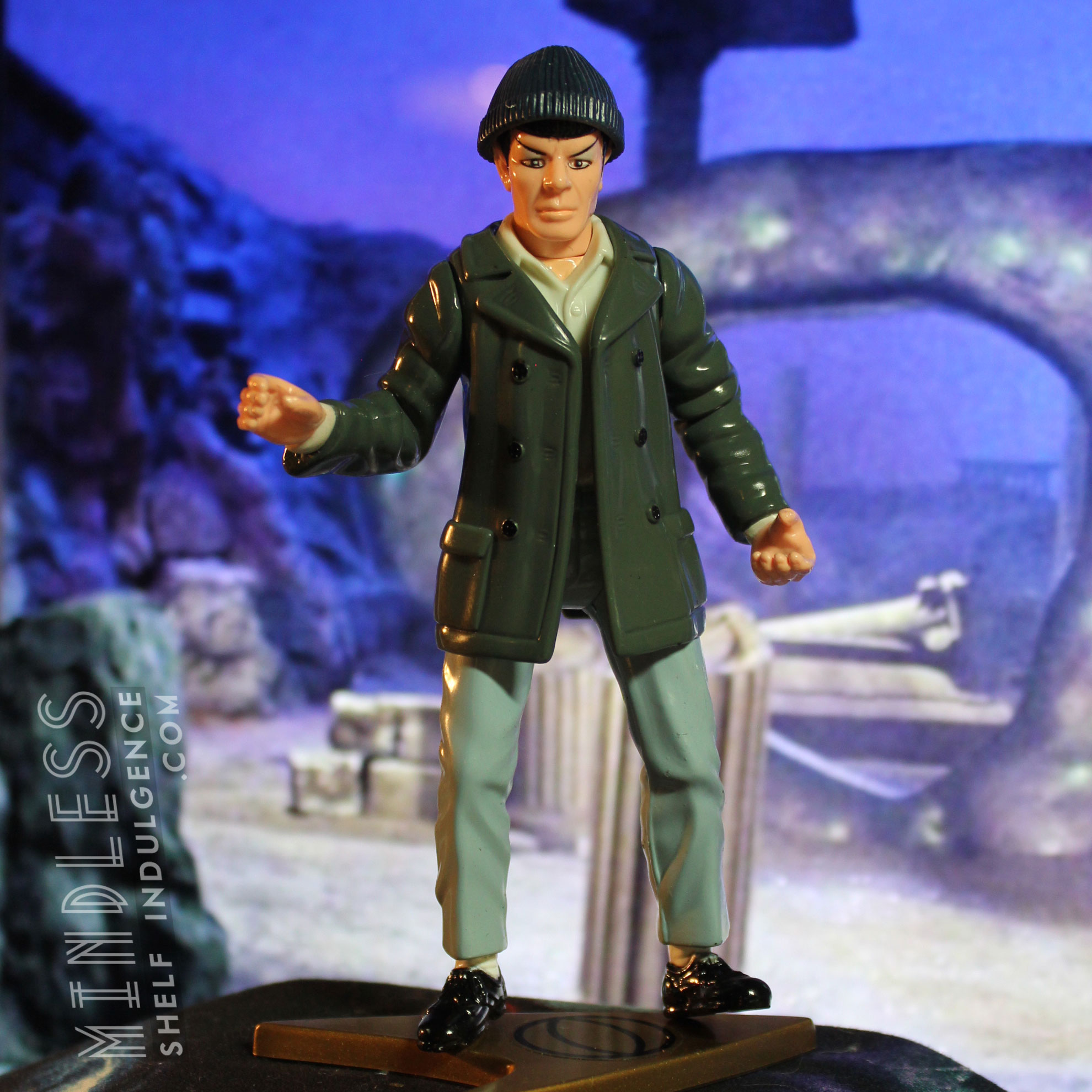
I’ve collected Star Trek stuff since 5th grade.
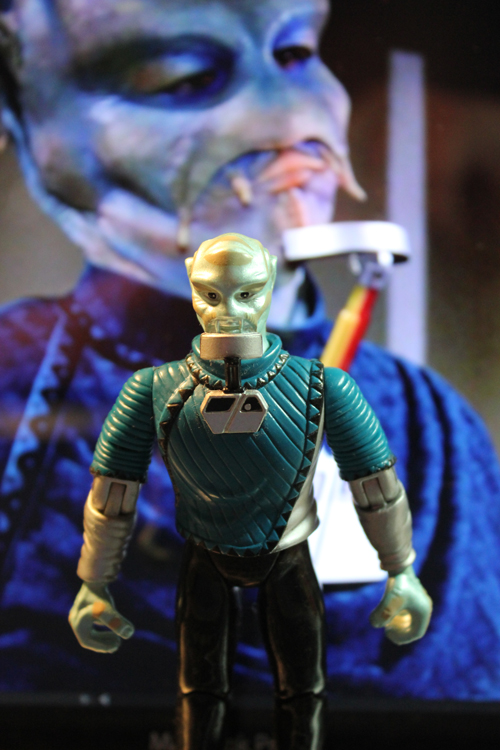
Back in the golden ’90s, Playmates’ $5 Star Trek figures were the very first thing I actively collected, from the first set of ten (made up of crew members, a Borg, a Romulan, Gowron, and a feral Ferengi) and on into the endless costume changes of the Starship Enterprise crew (Rising Through the Ranks Geordi, Fancy Party Miniskirt Geordi, Geordi’s Gone All Alien Now Geordi, and so on). Later, there were the one-episode aliens – all of whom had foreheads or mouths which in some way, and against all common sense, resembled mangled genitalia. We’re all a bit scarred by that girl with the anus-forehead who got Riker addicted to video games. Star Trek aliens were mostly vomited out of the worst things that medical textbooks had to offer, turned upside-down and glued to some poor actor’s face.
Mordock the Benzite never really stood up against a Tatooine Cantina Dannik Jerriko in any meaningful way, but I had to have Mordock, and my weekly $10 allowance would net me two new figures a week. While my friends played with Ninja Turtles in the Ghostbusters Firehouse, I positioned Picard on the Enterprise bridge playset and… well, watched him sit there, stare at the sad Romulan Warbird sticker that functioned as a main viewscreen, and make it so. And then the whole thing went into the attic, where I’m sure mice are exploring the deepest recesses of the Alpha Quadrant between sojourns into 1950s coat pockets.
My impulse to collect sometimes casts a very wide, expensive, regretful net, but it’s always included seeking the perfect (and affordable) Next Generation Starship Enterprise: the NCC-1701-D. Whether I was drawing it on my peer mediation folder in abject boredom, taping glow-in-the-dark pictures of the ship to my wall, or constructing networks of string to levitate the light-up scale model over my bed, I was very much into the Enterprise. Half-UFO, half-rocketship, it wasn’t nearly as cool as a Romulan Warbird, or the weirdly-lobed ships of the Ferengis. In retrospect, the Enterprise was probably the least visually aggressive ship in the entirety of Trek, all soft angles and sloping forms, but it’s that divergence from all practicality that makes it iconic. It appeals to the genetic human affection for flying space-discs, while lending them just enough elaborate pseudo-science to make the Enterprise a less threatening entity. And it also looked pretty comfortable inside. Every crewman’s quarters look like some kind of surreal, minimalist room in an alien sex hotel. But maybe that’s just my experiences in alien sex hotels.
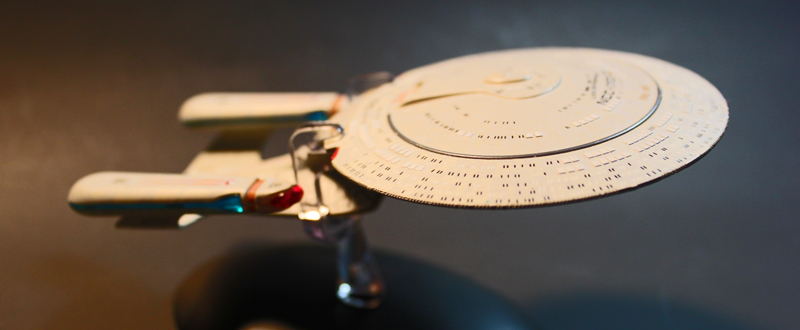
Original series Enterprise creator Matt Jefferies stated that he designed the ship’s nacelles on stalks which stretched away from the main ship because of everything that could go wrong when one straps a couple of ultra-powerful engines onto a ship. In a disaster situation, the hypothetical ship could make like a gecko and just snap off the offending parts. This concept is similar to “ejecting the warp core”, a maneuver used a few times throughout Trek, or lopping off Herschel’s leg before the walker infection reaches his brain so that he might continue to dish out the drawly country wisdom one so desperately needs in a world gone to hell.
Jefferies was honored in Trek canon with the addition of “Jefferies Tubes” to the NCC-1701-D. A lot less gross than they sound, Jefferies Tubes were the crawl spaces of the Enterprise… usually areas in which something explodes and blasts an unfortunate crew member with toxic radiation, or provides a place for invading aliens to hide, or serving as a nigh-inaccessible nook to bury some kind of surveillance device. Jefferies tubes: a claustrophobic nightmare where nothing ever went right. You’re welcome, Matt Jefferies.
That ideal Starship Enterprise which I’ve sought for so long has been released by Eaglemoss Collections in the UK. With thanks to Eaglemoss, I’ve been able to inspect the first ship in the series, and it’s an incredible piece. The company is mostly known in the US for producing a rad selection of Marvel DC Comics figures in lead, but they’ve recently embarked on series showcasing Star Trek Starships and Batmobiles, both things which moisten my geek glands. I don’t know where those are, but something feels swollen.
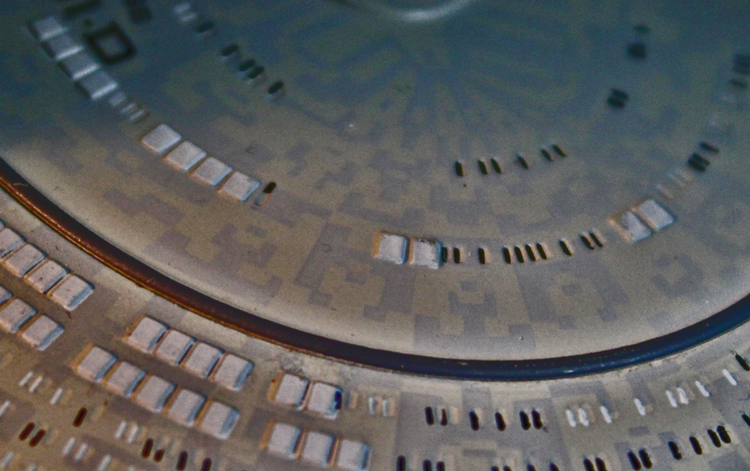
The Eaglemoss Starship Enterprise is an incredible little piece, sculpted and layered with more details than I’ve seen on any other Enterprise. Hundreds of tiny windows speckle the edges of the main saucer, printed with black and white dashes of paint to provide the implied texture of lights being on and off. This texture is deepened with a barely-perceptible yellow-grey pattern of pixel-like panels over the entire ship. The ship’s saucer seems to be the main metal section of the Enterprise, with the rest being plastic, but visually identical to the metal bits. The transition to plastic allows the nacelles to include translucent red and blue details, which are always my favorite part of Enterprise models. Or any toy. If I can see through any part of it, I probably love it. Careful, though – the Enterprise is a delicate specimen. The fine details and minuscule parts are extremely fragile. A few dabs of Krazy Glue later, my Enterprise was back to normal.
The ship perches on a heavy base with a velvety bottom (not unlike how I prefer my women), held aloft by a clear fork. It’s really the most noble thing to ever sit on my desk. More meaningful than a Playmobil Statue of Liberty, more serious than a twitchy, pink Krang… and maybe just as awesome as The Watcher’s giant, scowling head.
In terms of scale, the Enterprise is the size of a sweaty nerd-hand. How does it scale against the classic Playmates ‘Q in Judge’s Robes’?
For nerds, the Enterprise is a symbol of accomplishment, both for man and mankind. The narrative world Trek positions the Enterprise as the pinnacle of human achievement. Landing a position aboard mankind’s exploratory flagship seems to be everything that a young space cadet wants. On a deeply nerdy level, the Enterprise is also an icon of possibility. It’s the bridge between boring ol’ Earth and everything else, and the ‘everything else’ is colossal.
 C. David is a writer and artist living in the Hudson Valley, NY. He loves pinball, Wazmo Nariz, Rem Lezar, MODOK, pogs, Ultra Monsters, 80s horror, and is secretly very enthusiastic about everything else not listed here.
C. David is a writer and artist living in the Hudson Valley, NY. He loves pinball, Wazmo Nariz, Rem Lezar, MODOK, pogs, Ultra Monsters, 80s horror, and is secretly very enthusiastic about everything else not listed here.
